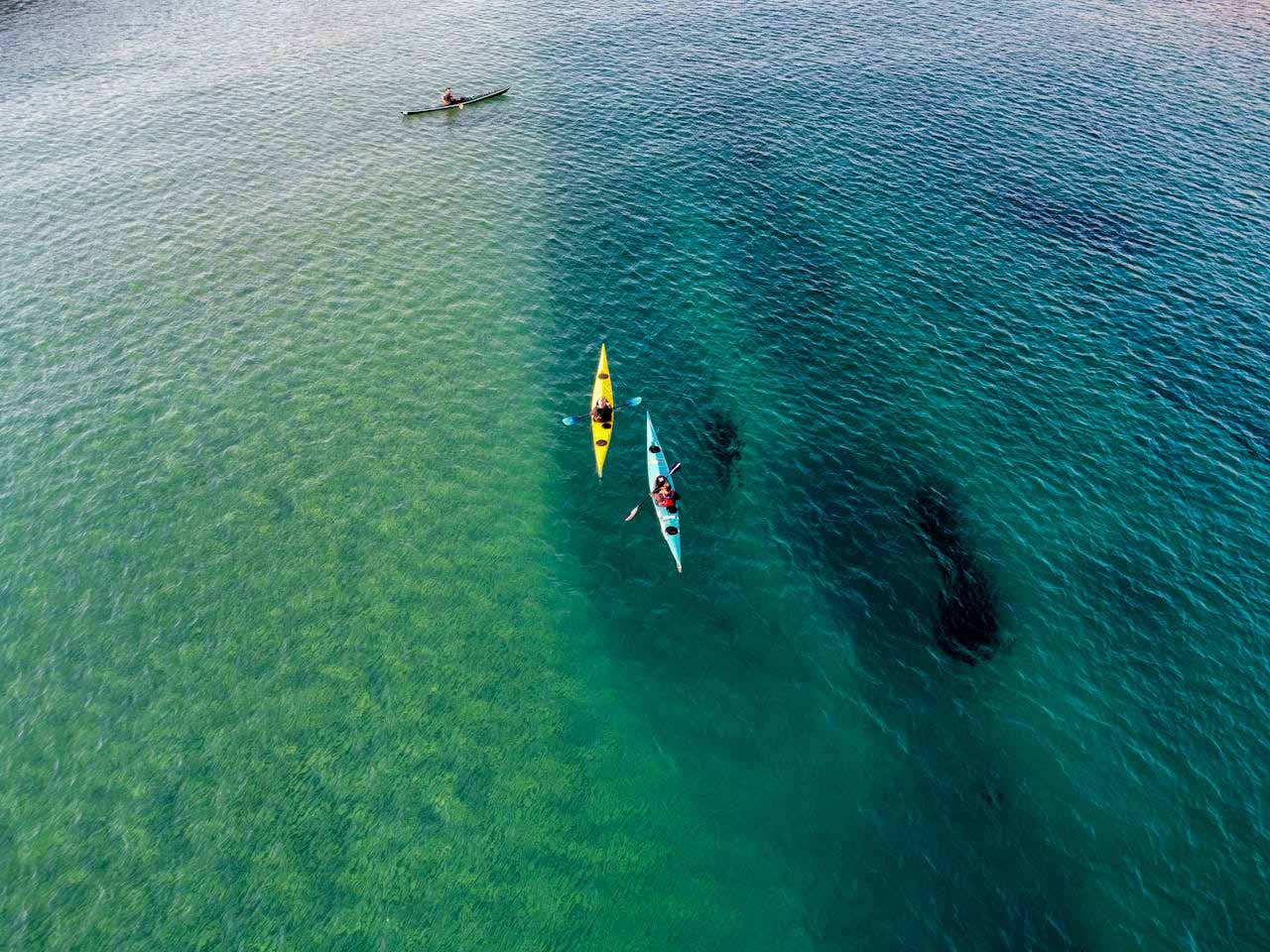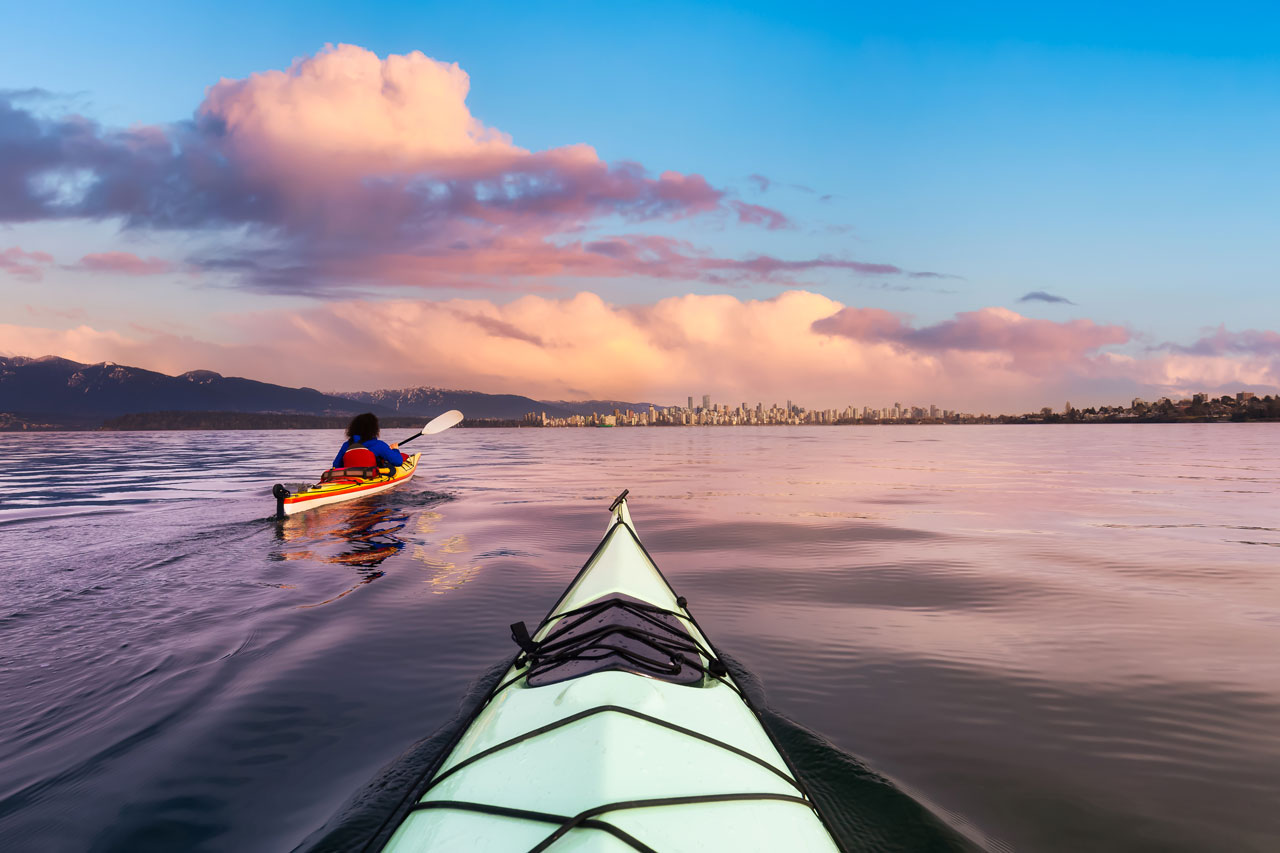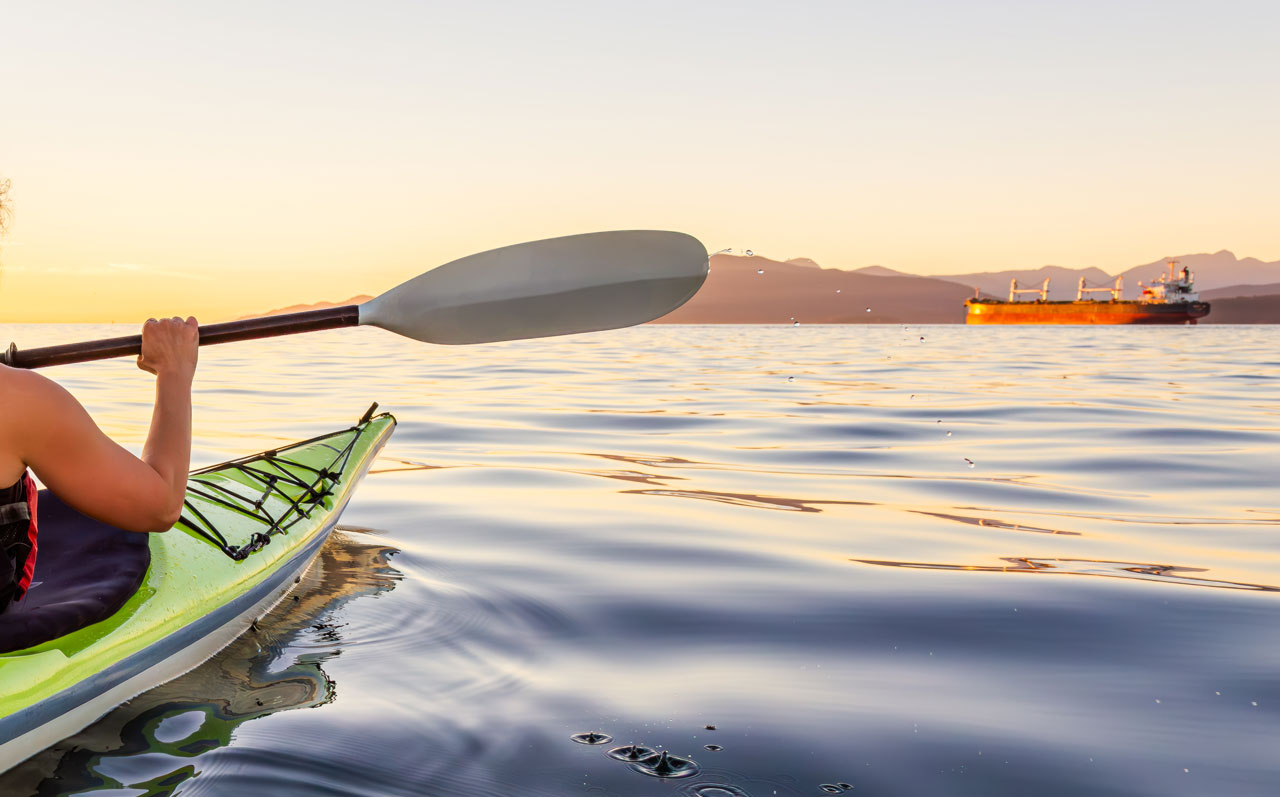Kayaking offers an incredible way to explore natural waterways, from serene lakes to ocean coves teeming with marine life. Recently, clear bottom kayaks have gained popularity, providing a unique, immersive experience that traditional kayaks don’t offer. By allowing paddlers to see directly beneath the water’s surface, clear bottom kayaks create an unparalleled connection to marine environments. However, choosing between clear bottom kayaks and traditional kayaks involves weighing several factors, such as the type of experience you want, where you’ll be kayaking, and your level of experience.
In this blog, we’ll provide a detailed comparison of clear bottom kayaks and traditional kayaks, helping you decide which option is best for your next adventure.
The Basics of Clear Bottom Kayaks
Clear bottom kayaks are designed with transparent or partially transparent hulls, allowing paddlers to see directly into the water beneath them. This type of kayak is ideal for areas with clear water, such as coastal coves, shallow lakes, and rivers where marine life, plants, or unique geological features are visible below.
Clear bottom kayaks are usually constructed with lightweight, durable materials like polycarbonate, designed to maintain transparency without sacrificing strength or buoyancy. While they function similarly to traditional kayaks in terms of paddling, their unique construction opens up a different type of experience—one that connects you with the underwater world.
Traditional Kayaks: The Classic Option
Traditional kayaks, on the other hand, have solid hulls made from materials such as polyethylene, fiberglass, or inflatable vinyl. These kayaks are built for stability, speed, and durability across various water conditions, making them versatile for everything from slow-moving rivers to open ocean paddling.
Traditional kayaks are available in many different styles—sit-on-top, sit-in, inflatable, and tandem—offering a variety of options depending on your paddling preferences and the type of water you’ll be navigating.
Clear Bottom Kayaks vs. Traditional Kayaks: A Comprehensive Comparison
Now that we’ve defined the two types of kayaks, let’s dive into a more detailed comparison, highlighting their benefits, potential drawbacks, and ideal use cases.
1. The Viewing Experience: A Window to the Underwater World**
Clear Bottom Kayaks:
The biggest draw of clear bottom kayaks is, of course, the ability to see through the hull and observe the underwater environment. This feature is particularly engaging when kayaking over coral reefs, seagrass beds, or areas with diverse marine life. If you’re paddling in clear, shallow waters, you’ll have an incredible view of fish, plants, and even the ocean floor.
Clear bottom kayaks are a perfect fit for eco-tourism and for those looking to enjoy a close connection with marine ecosystems. Paddling over a reef or a kelp forest in a clear bottom kayak can feel like snorkeling without getting wet, making it an ideal choice for both adventure enthusiasts and casual paddlers alike.
Traditional Kayaks:
While traditional kayaks don’t offer the same visual experience, they can still provide a strong connection to nature. Many traditional kayaks are designed for performance and stability, making them well-suited for exploring more varied waters. They can navigate choppier waters with greater ease and are better suited for long-distance kayaking trips or paddling in conditions where seeing underwater isn’t a priority.
For paddlers who are more focused on speed, maneuverability, or covering greater distances, traditional kayaks may be the preferred choice.
2. Performance and Stability
Clear Bottom Kayaks:
Due to their transparent hulls, clear bottom kayaks can sometimes be less stable than traditional models, particularly in rougher water conditions. The lightweight materials used in their construction, while durable, can make them more susceptible to tipping in strong currents or high winds. However, in calm waters, such as bays or lagoons, clear bottom kayaks perform well and provide a smooth, serene paddling experience.
For beginners or those paddling in calm, shallow waters, clear bottom kayaks are typically easy to use and offer a stable ride.
Traditional Kayaks:
Traditional kayaks, with their varied designs, are built to handle a wide range of water conditions. Sit-in and sit-on-top kayaks, for instance, offer excellent stability, making them suitable for everything from gentle rivers to open-ocean paddling. Many traditional kayaks are also designed for higher speeds and better maneuverability, giving experienced paddlers more control in rough or unpredictable waters.
For those looking to tackle challenging water conditions or embark on longer journeys, traditional kayaks are likely the better option.
3. Durability and Maintenance
Clear Bottom Kayaks:
While clear bottom kayaks are constructed from strong materials like polycarbonate, they are often more prone to scratches and wear than traditional kayaks. Over time, scratches can cloud the transparency of the hull, diminishing the clarity of your view. However, with proper care and maintenance, including rinsing the kayak after each use and avoiding rocky or shallow areas where the bottom may drag, clear bottom kayaks can maintain their integrity for years.
It’s also important to store clear bottom kayaks in shaded areas or covered spaces to protect them from UV damage, which can cause the transparent material to degrade over time.
Traditional Kayaks:
Traditional kayaks, particularly those made from polyethylene or fiberglass, tend to be more durable and resistant to scratches and impact. They are often better suited for rougher environments, such as rivers with rocky bottoms or open waters with strong currents. Additionally, traditional kayaks require less maintenance in terms of preserving the hull material’s appearance, although regular cleaning and storage in shaded areas are still recommended.
For paddlers who expect to use their kayaks in a variety of conditions or over rough terrain, traditional kayaks offer greater long-term durability.
4. Cost and Accessibility
Clear Bottom Kayaks:
Because of their specialized construction, clear bottom kayaks tend to be more expensive than traditional kayaks. The polycarbonate material used to make the hulls transparent is costlier than the polyethylene or vinyl used in most traditional models. However, for those interested in the unique experience these kayaks provide, the investment can be worth it, particularly for eco-tourism businesses or individuals looking to explore calm, clear waters regularly.
Traditional Kayaks:
Traditional kayaks are available at a wide range of price points, from budget-friendly inflatable models to high-end fiberglass options. This makes them accessible to a larger audience, particularly those who are looking for a reliable kayak for recreational paddling, fishing, or longer-distance kayaking trips.
For paddlers on a budget, traditional kayaks offer more options, from entry-level models to premium designs suited for experienced kayakers.
Choosing the Right Kayak for Your Adventure
Ultimately, the decision between clear bottom kayaks and traditional kayaks comes down to the type of experience you’re looking for and the environments you plan to paddle in.
Clear Bottom Kayaks are ideal for:
- Paddling in clear, calm waters such as bays, lagoons, or shallow lakes.
- Eco-tourism experiences where observing marine life and underwater ecosystems is the primary goal.
- Beginners and casual paddlers looking for a relaxing, visually immersive experience.
Traditional Kayaks are ideal for:
- Paddling in a variety of water conditions, from calm lakes to open ocean.
- More experienced kayakers seeking better performance, speed, and maneuverability.
- Long-distance trips or rougher waters where stability and durability are essential.
Clear Bottom Kayaks vs. Traditional Kayaks
Choosing between clear bottom kayaks and traditional kayaks depend on the type of kayaking adventure you want. If your goal is to explore San Diego’s beautiful marine environments, taking in the underwater views, then a clear bottom kayak will give you a one-of-a-kind experience. On the other hand, if you’re looking for a more versatile, performance-oriented kayak that can handle a range of conditions, a traditional kayak may be the better choice.
By understanding the strengths and limitations of each option, you can make an informed decision that enhances your kayaking experience, whether you’re exploring calm, clear waters or tackling more adventurous routes. No matter which type of kayak you choose, the important thing is to get out on the water and enjoy the incredible natural beauty that kayaking has to offer.
FAQs when getting tips on Clear Bottom Kayaks
What are clear bottom kayaks, and how do they differ from traditional kayaks?
Clear bottom kayaks are designed with a transparent hull, allowing paddlers to see directly into the water beneath them. Unlike traditional kayaks, which have solid hulls, clear bottom kayaks provide a unique, immersive experience that connects paddlers with the underwater environment, making them ideal for exploring clear, shallow waters.
Where are clear bottom kayaks best used?
Clear bottom kayaks are best suited for calm, clear waters where the underwater environment is visible, such as bays, lagoons, and shallow lakes. They’re ideal for locations like San Diego, where marine life, coral reefs, and underwater features can be observed directly through the kayak’s transparent hull.
Are clear bottom kayaks as durable as traditional kayaks?
While clear bottom kayaks are made from durable materials like polycarbonate, they can be more prone to scratches and wear over time, especially if used in rocky or shallow areas. Proper care and maintenance, such as rinsing after each use and storing in shaded areas, can help preserve their transparency and durability.
Do clear bottom kayaks offer the same stability as traditional kayaks?
Clear bottom kayaks tend to be slightly less stable in rough waters due to their lightweight construction, making them better suited for calm environments. Traditional kayaks, on the other hand, are designed for a variety of water conditions and tend to offer better stability and performance in choppy or open waters.
Are clear bottom kayaks more expensive than traditional kayaks?
Yes, clear bottom kayaks are generally more expensive due to the specialized materials used in their transparent construction. However, for paddlers interested in exploring underwater environments and marine life, the immersive experience they offer can make the investment worthwhile.




